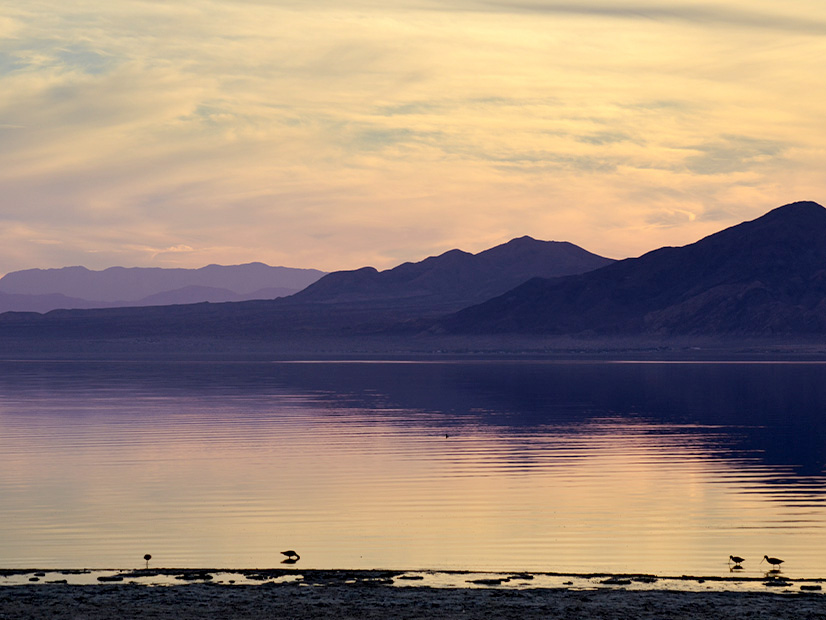
The Southern California region's supply could produce enough lithium to release the U.S. from its dependence on foreign sources of the key mineral, according to a new report.
The Salton Sea region of Southern California could produce enough lithium for more than 375 million electric vehicle batteries, potentially releasing the U.S. from its dependence on foreign sources of the key mineral, according to a new report.
In fact, the region, which has been dubbed Lithium Valley, may have enough lithium to allow the U.S. “to meet or exceed global lithium demand for decades,” according to the Department of Energy, which funded the study.
The analysis was led by researchers from Lawrence Berkeley National Laboratory. DOE called it the most comprehensive assessment so far of the area’s lithium potential.
“This report confirms the once-in-a-generation opportunity to build a domestic lithium industry at home while also expanding clean, flexible electricity generation,” Jeff Marootian, DOE’s principal deputy assistant secretary for energy efficiency and renewable energy, said in a statement.
Imperial County, Calif., is the site of the Salton Sea Known Geothermal Resource Area (KGRA). Geothermal brines that are a byproduct of geothermal electricity generation in the area have been found to be rich sources of lithium.
Lithium is a key component of EV batteries and is also used in battery energy storage systems, which are playing an increasingly important role in decarbonizing electricity production. But currently, the U.S. must import nearly all the lithium it needs.
The 11 geothermal power plants now within the KGRA have a combined capacity of about 400 MW. That’s just a fraction of the estimated 2,950 MW in potential geothermal capacity in the area, “leaving extensive room to increase geothermal electricity generation while accessing more of the region’s available lithium resources,” according to DOE.
The Berkeley Lab researchers projected that the geothermal brines in the area could yield 3,400 kilotons of lithium — enough for 375 million EV batteries, which is more than the number of vehicles now on U.S. roads.
Those findings assume the entire Salton Sea geothermal reservoir could be accessed for electricity production and that lithium could be fully extracted from the resulting geothermal brines.
Three companies that are building or operating power plants in the area — Berkshire Hathaway Energy Renewables, EnergySource and Controlled Thermal Resources — are planning to use direct lithium extraction technology to recover lithium from the geothermal brine, the report said.
The Berkeley Lab analysis also looked at potential impacts of geothermal power plants and lithium extraction on air quality, water resources and seismic activity.
“The analysis illustrates that if these things are done properly, lithium development is not likely to create significant negative environmental impacts,” the researchers said. According to DOE, direct lithium extraction from brine requires 99% less water per ton of lithium than current mining procedures and emits almost no CO2.
But the researchers acknowledged that the impacts of lithium extraction on waste production “will require attention moving forward.”
For example, they said, the role of battery recycling in a potential battery supply hub is a topic that could be further evaluated.
“Recycling these batteries could complement and perhaps ultimately replace raw material extraction as a source of lithium, making the industry more sustainable in the longer term,” the report said.
The Berkeley Lab analysis comes after the California Energy Commission convened a panel known as the Lithium Valley Commission, which met during 2021 and 2022 to consider issues related to lithium extraction in the state. Assembly Bill 1657 of 2020 called for formation of the commission.
The commission made several recommendations in a final report released in December 2022. Those included increased state funding for research and development, support for start-up companies and public-private partnerships to promote development of a circular lithium economy in California.
Another recommendation was to accelerate investment and upgrades in transmission for geothermal power plants in Imperial Valley to be online starting in 2024.
